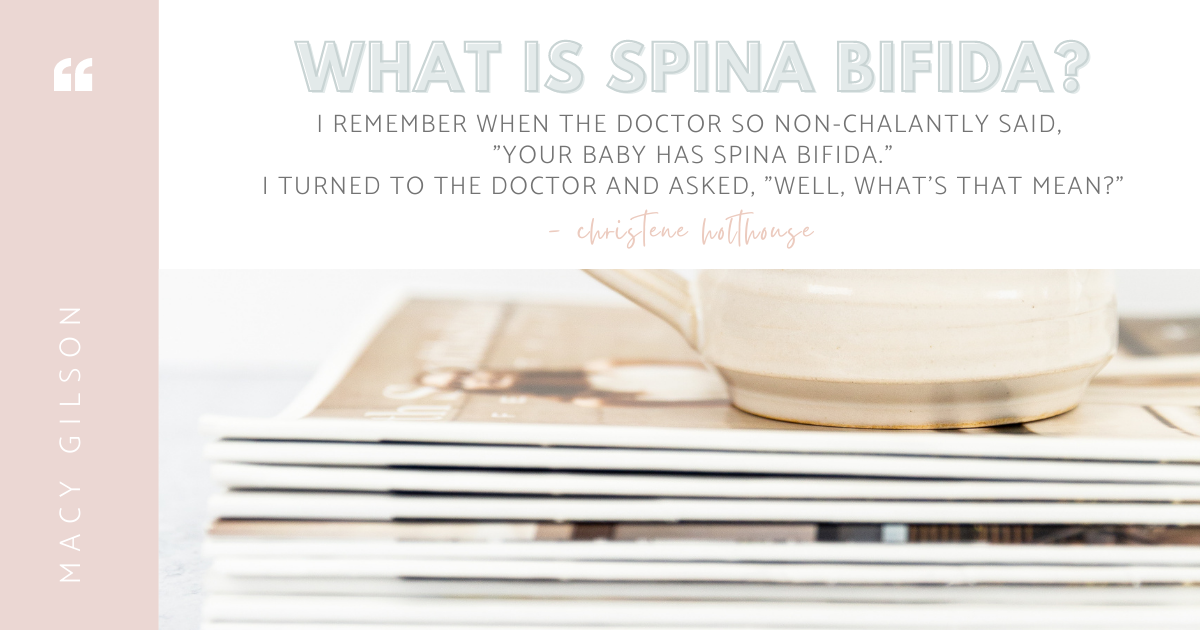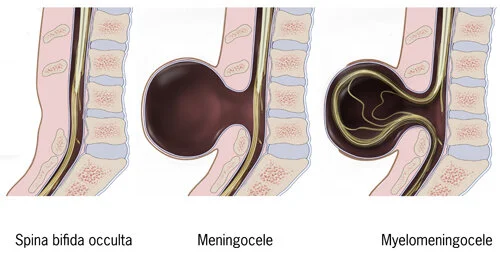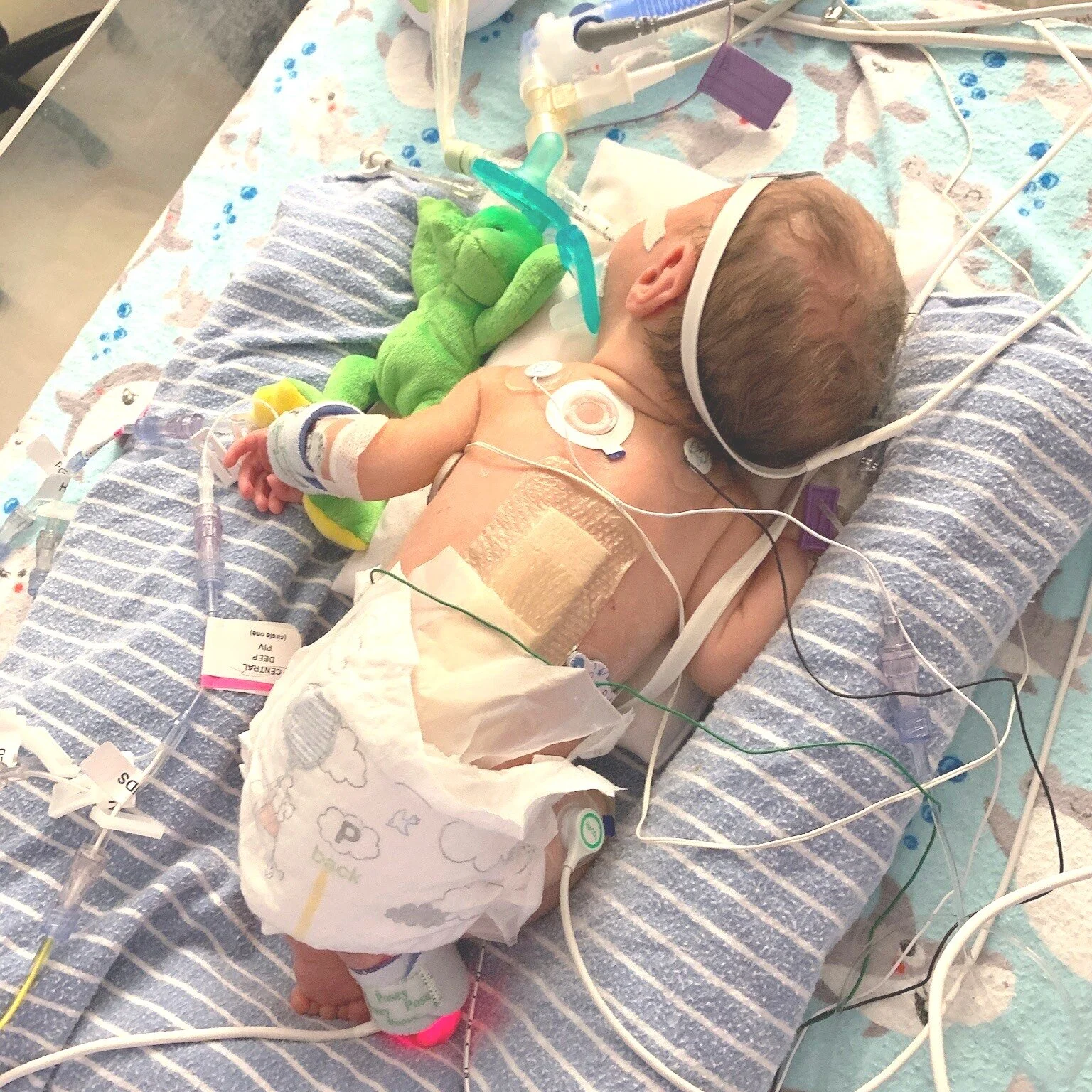This new world can seem daunting and overwhelming and quite frankly, scary! I see you, I hear you, and I’ve got just the thing to help you navigate your new reality. Download my FREE guide: 5 Things to do After Your Child’s Diagnosis, full of easy to follow action steps to help you guide you on your journey. Click here to download instantly!
Have you just heard the words “spina bifida” for the first time in your life? Or have you heard it before but you’re not quite sure what it means and how it will affect your baby? Well, you’ve come to the right place, so just keep reading!
This post may contain affiliate links. For more information, you can read my disclosure statement here.
Overview of Spina Bifida
Spina, meaning having to do with the spine, and bifida, meaning split or open, is a neural tube defect that occurs when a portion of the neural tube does not fully close. This means that the spine is unable to protect the spinal cord and nerves, often resulting in damage to these areas. Spina bifida is congenital, meaning present at birth, although sometimes not diagnosed until later. You cannot “contract” spina bifida and there is no known causes, although there are maternal indicators that have helped geneticists and physicians identify risk factors.
Spina bifida occurs when a baby’s developing neural tube does nor close correctly. In a typical pregnancy, the neural tube forms early and usually closes by the 28th day post conception. Often, women are unaware they are pregnant until this time, at which time spina bifida would have already occurred.
Types of Spina Bifida
Spina Bifida Occulta - this is the mildest form of the three types of spina bifida. “Occulta” means “hidden” and this type typically goes undiagnosed for that very reason. The neural tube defect is difficult to see without an MRI, X-ray or other imaging. People with spina bifida occulta may or may not have nerve and/or spinal cord damage.
Meningocele - this is the rarest form of the three types of spina bifida. The neural tube defect is marked by a sac of fluid coming through an opening in the back. With meningocele, there is no spinal cord in the sac, only fluid, meaning little to no nerve damage and resulting in minor disabilities.
Myelomeningocele - this is the most severe type of spina bifida and the type most people think of when they hear spina bifida. Myelomenigocele is characterized by an open neural tube along one or more vertebrae, which allows the spinal nerves to push through the opening in the tube. This exposes the spinal cord and nerves and forms a sac on the lower back. Myelomeningocele can be fatal if not treated right away. Common characteristics of myelomeningocele are infections (such as meningitis), lower limb numbness and/or paralysis, difficulty with bladder control and hydrocephalus (excess of cerebrospinal fluid in the brain).
What Causes Spina Bifida?
There is no known cause of spina bifida, but medical professionals believe it results from a combination of genetic and environmental factors. Between 1,500 and 2,000 babies are born with spina bifida in the United States each year and over 166,000 Americans have spina bifida. Spina bifida is chronic and cannot be “cured” but it can be managed with proper health care and therapy. Click here to learn more about spina bifida!
Meet Some Kids with Spina Bifida
Don’t forget to download my FREE guide: 5 Things to do After Your Child’s Diagnosis. I designed this to help you navigate the unknowns that come with a new diagnosis, as well as provide support and extra resources. Click here to download now!
As a disability advocate, I have the privilege of sharing stories from families around the world in an effort to increase disability awareness and educate others who may be asking the same question, “What is Spina Bifida?” and I hope you’ve found this as a place of support and community!








